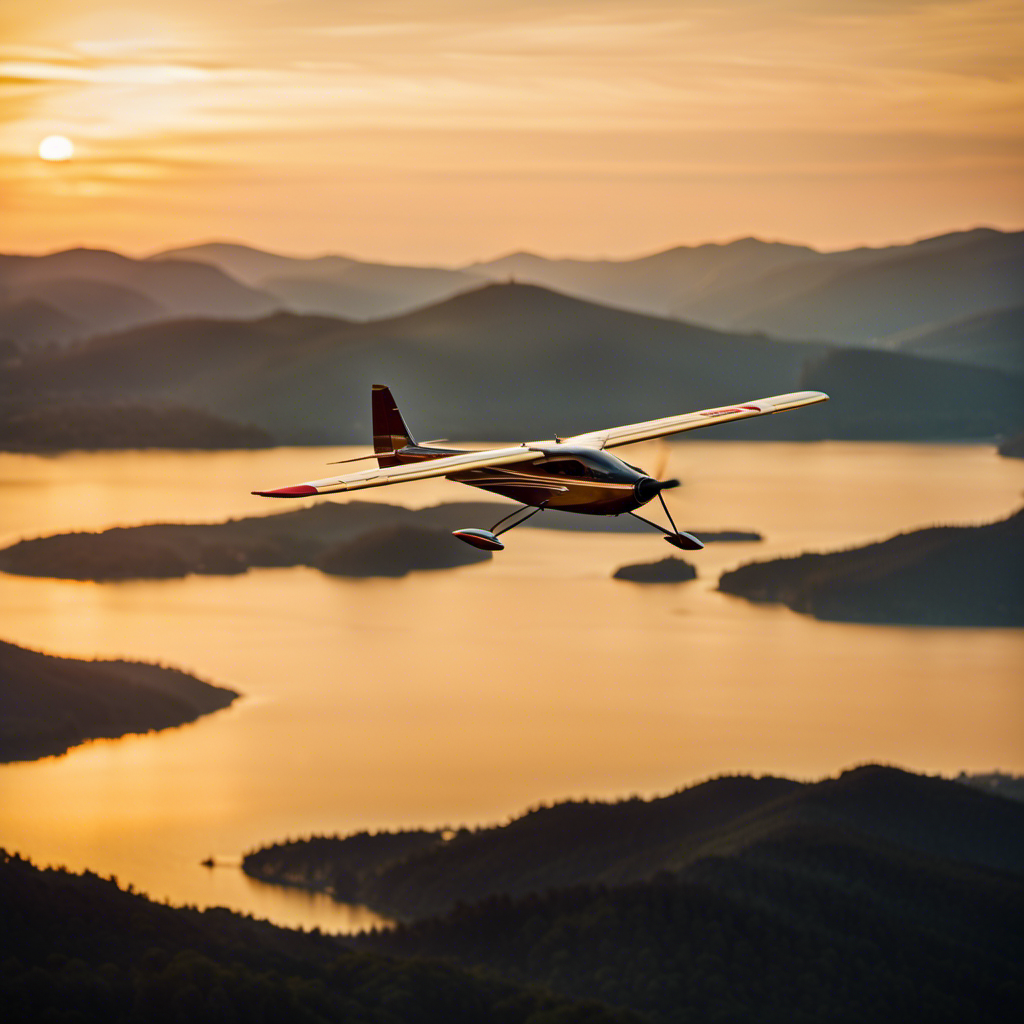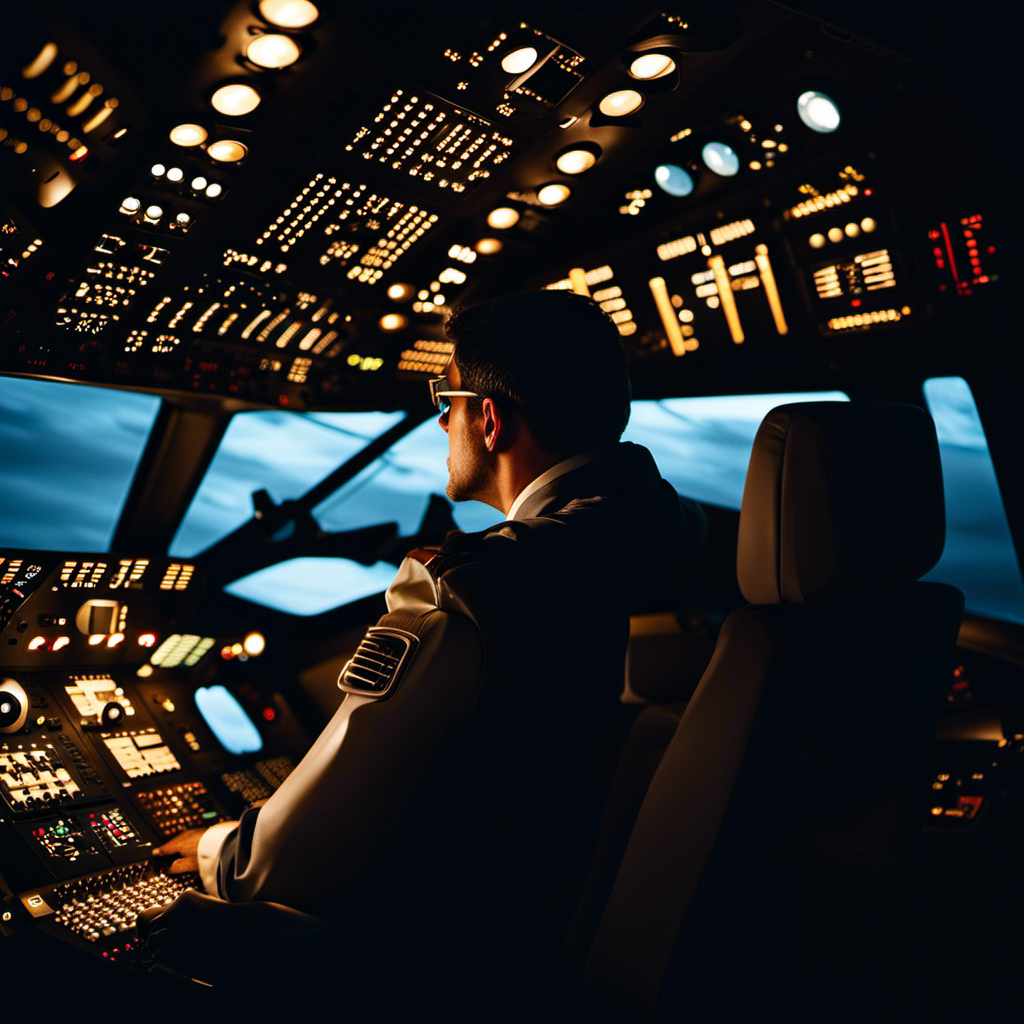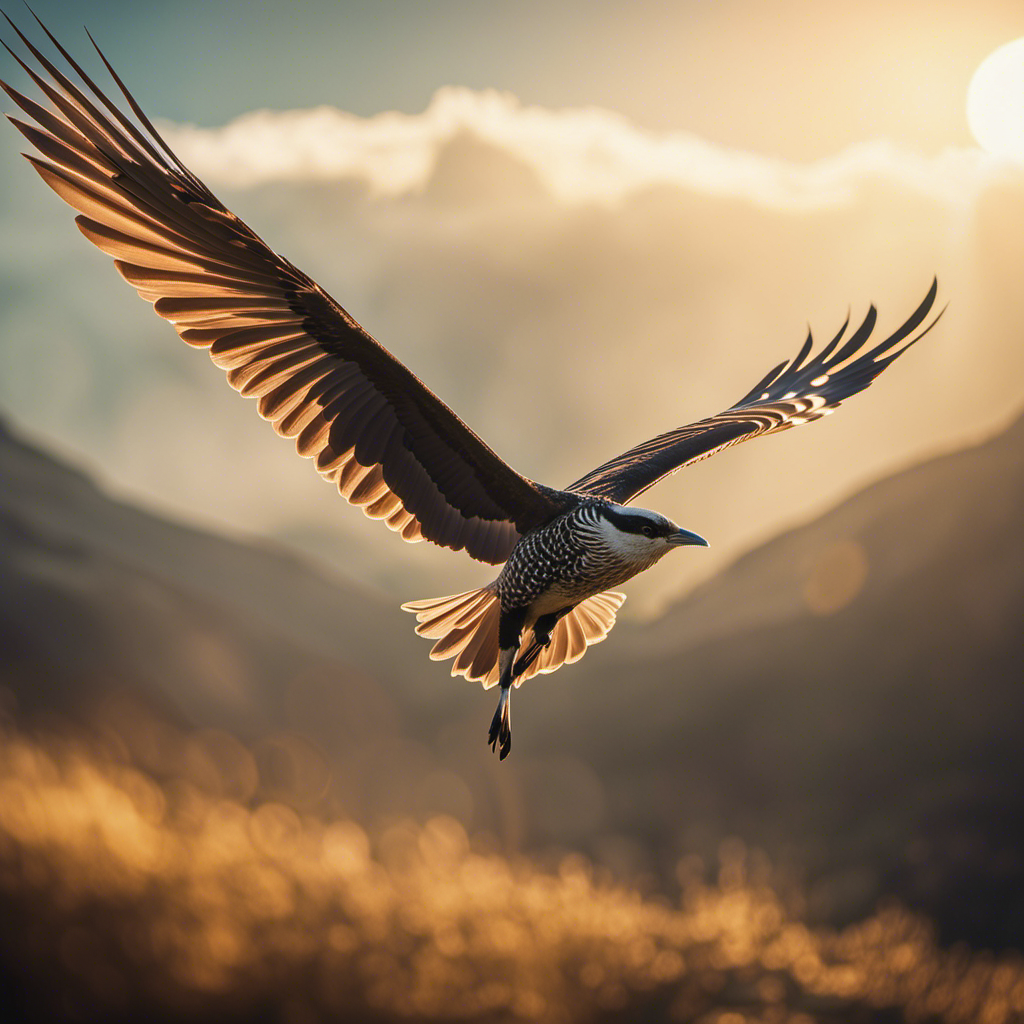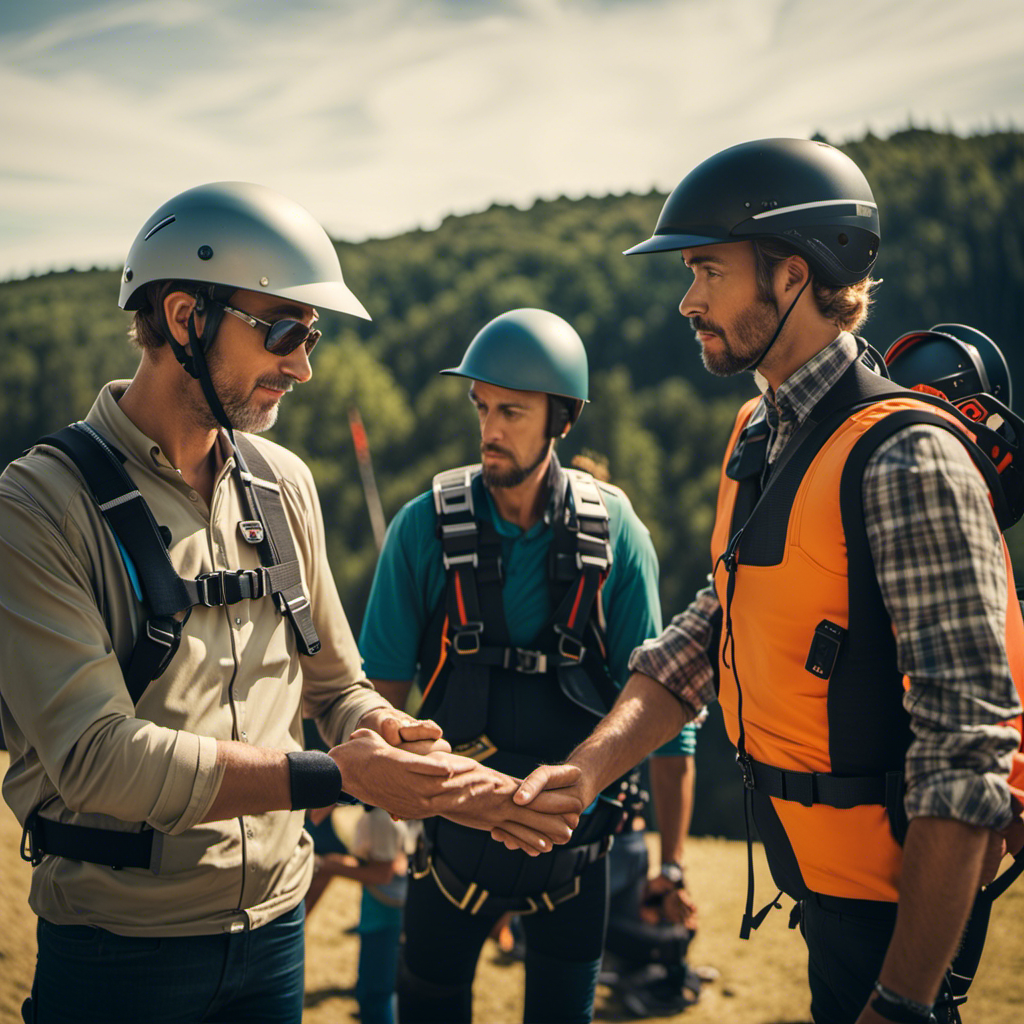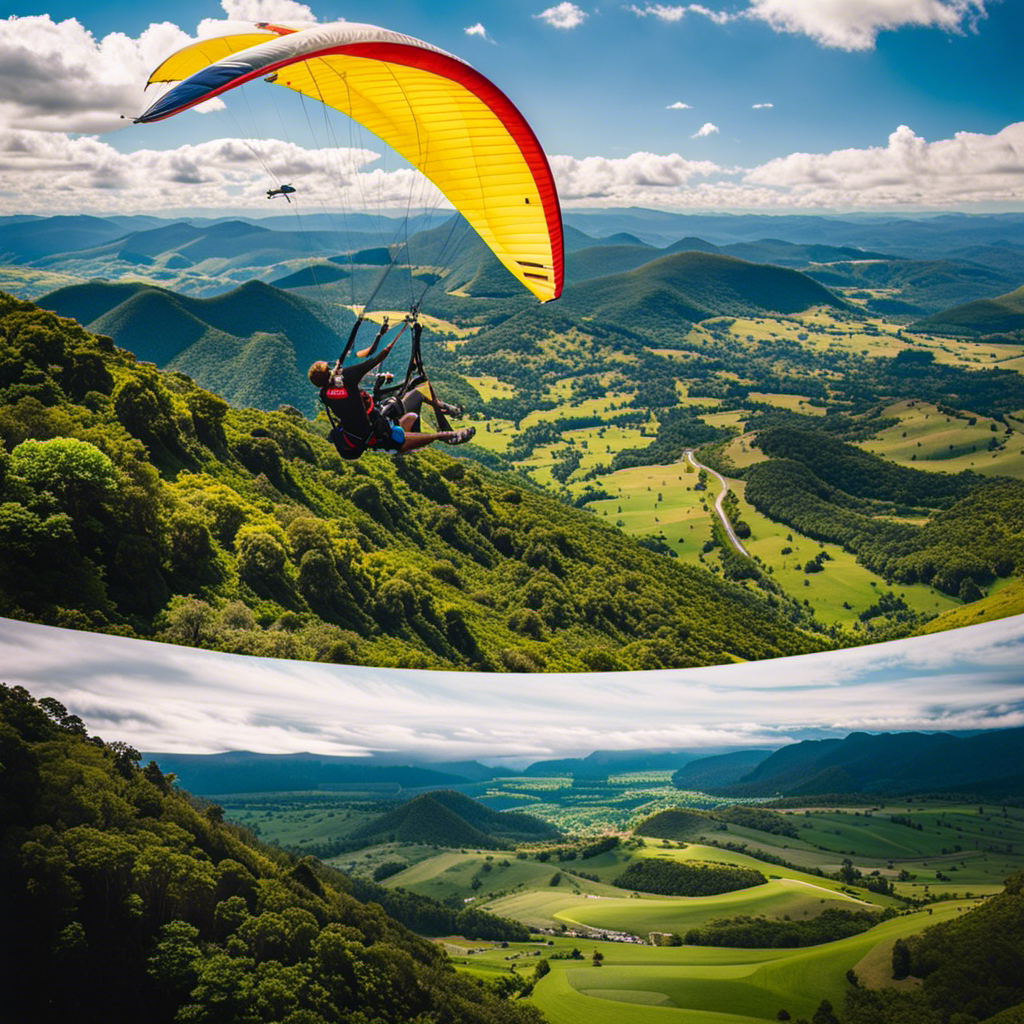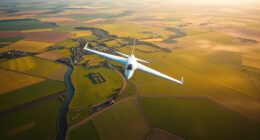I’ve always been fascinated by the cost of owning a glider. They glide through the sky so gracefully, like birds in flight. But what exactly is the real price of owning one of these beautiful aircraft? Curious minds will find out more as they delve deeper into the world of gliders. Keep reading to uncover the secrets behind the expenses of owning a glider.
In this article, we’ll explore the different factors that can affect the price of a glider, from the type of glider to additional equipment and ongoing maintenance.
By the end, we’ll have a clearer understanding of what it takes to soar in the skies with these magnificent machines.
Key Takeaways
- The cost of glider insurance and storage/hangar fees can vary based on factors such as the value of the glider and coverage options. It is important to shop around and compare quotes to find the best policy for your needs and budget.
- Transportation costs for gliders can include the purchase of trailers or hiring transportation services. Trailers can range from $2,000 to $10,000, and transportation services charge $1 to $3 per mile. Resale value should be considered when choosing transportation options.
- Financing options such as loans or lease programs are available for those who are unable to pay upfront for a glider. Loans from financial institutions have varying terms and interest rates based on credit score, while lease programs offer shorter commitments or testing options. It is important to compare and evaluate different options.
- Ongoing maintenance costs, including regular inspections and repairs, should be included in the budget for owning a glider. The type and condition of the glider will affect the estimated costs. Researching and comparing prices for maintenance services is recommended.
Types of Gliders: Different types of gliders can vary in cost, such as single-seat gliders, two-seat gliders, or motorized gliders.
If you’re interested in purchasing a glider, you should know that the cost can vary depending on the type you choose. There are single-seat gliders, two-seat gliders, and motorized gliders. When considering the cost factors of gliders, it’s important to understand the pricing comparison between these different types.
Single-seat gliders tend to be the most affordable option, with prices ranging from $15,000 to $50,000. Two-seat gliders, which offer the advantage of having an instructor or a passenger, can range from $30,000 to $100,000. Motorized gliders, on the other hand, are the most expensive, with prices starting at $70,000 and going up to $150,000 or more.
It’s essential to consider your budget and requirements when deciding on the type of glider that suits you best. Transitioning into the next section, it’s worth mentioning that the condition of the glider can greatly affect its cost. Generally, new gliders are more expensive than used ones.
New vs. Used: The condition of the glider can greatly affect its cost, with new gliders generally being more expensive than used ones.
New gliders are typically pricier than used ones due to their condition. When comparing new and used gliders, there are several cost factors to consider.
Firstly, new gliders are in pristine condition and often come with warranties, which can justify their higher price. Additionally, new gliders may incorporate the latest technological advancements, making them more efficient and safer to fly.
On the other hand, used gliders may have wear and tear, potentially requiring repairs or replacements, which can add to their overall cost. However, used gliders can also present a more affordable option for those on a budget. It is important to evaluate the condition and maintenance history of a used glider before purchasing to ensure its safety and longevity.
Furthermore, the cost of a glider may also include additional equipment such as instruments, parachutes, or towing equipment.
Additional Equipment: The cost of a glider may also include additional equipment such as instruments, parachutes, or towing equipment.
When considering purchasing a glider, you should factor in the additional expenses of instruments, parachutes, or towing equipment. These additional equipment costs can significantly impact the overall cost of the glider. Let’s take a closer look at the potential costs involved:
| Equipment | Cost |
|---|---|
| Instruments | $1,500 – $10,000 |
| Parachutes | $500 – $2,500 |
| Towing Equipment | $1,000 – $5,000 |
As you can see from the table above, the cost of instruments can range from $1,500 to $10,000, depending on the type and quality of the instruments. Parachutes, which are crucial for safety during emergency situations, can cost between $500 and $2,500. Towing equipment, necessary for glider launches, can range from $1,000 to $5,000.
Considering these additional equipment costs is essential to accurately assess the total expense of owning a glider. It’s also important to remember that these costs may vary depending on individual preferences and requirements.
When budgeting for a glider, it’s crucial to consider not only the initial purchase price but also the ongoing costs of maintenance and upkeep. This includes expenses such as inspections, repairs, and replacement parts.
Maintenance and Upkeep: Consider the ongoing costs of maintaining and repairing the glider, including inspections, repairs, and replacement parts.
To properly budget for your glider, you should take into account the ongoing expenses of maintaining and repairing it. This includes inspections, repairs, and replacement parts. Maintenance costs and repair expenses can vary depending on the specific make and model of your glider, as well as the frequency of usage.
On average, glider owners can expect to spend around $500 to $1,000 per year on maintenance and repairs. This includes the cost of routine inspections, necessary repairs, and the occasional replacement of parts. It is important to factor in these costs when considering the overall affordability of owning a glider.
Additionally, don’t forget to factor in the cost of training and obtaining the necessary licenses and certifications to operate a glider. This ensures that you can safely and legally enjoy flying your glider.
Training and Licensing: Factor in the cost of training and obtaining the necessary licenses and certifications to operate a glider.
Make sure to include the expense of training and acquiring the required licenses and certifications to operate a glider in your budget.
When conducting a cost analysis for owning a glider, it is crucial to consider the training requirements. The training process typically involves both ground school and flight training, which can vary in duration and cost depending on the individual’s aptitude and the training organization. Additionally, there may be fees associated with written exams and practical assessments to obtain the necessary licenses and certifications.
It is important to research and compare the costs of different training programs and instructors to ensure you are getting the best value for your investment. By factoring in these expenses, you can accurately assess the overall cost of owning and operating a glider.
Insurance: Glider insurance is important for protecting your investment and covering potential damages or accidents.
Insurance: Glider insurance is important for protecting your investment and covering potential damages or accidents.
Glider insurance is crucial for safeguarding your investment and providing coverage for possible damages or accidents. Investing in a glider can be a significant financial commitment, and protecting that investment is essential. Here are three reasons why glider insurance is a wise choice for investment protection:
-
Liability coverage: Accidents can happen, and if you are found responsible for causing damage to property or injuring someone while operating your glider, liability coverage can help cover the costs of legal fees and potential settlements.
-
Physical damage coverage: Gliders are vulnerable to damage from various sources, such as severe weather, collisions, or theft. Having insurance that covers physical damage can provide peace of mind knowing that repairs or replacements will be covered.
-
Medical coverage: In the unfortunate event of an accident or injury while operating your glider, medical coverage can help cover the costs of medical expenses, hospital stays, and rehabilitation.
Glider insurance is not something to overlook when considering the overall costs of owning a glider. It provides essential protection for your investment and ensures that you can enjoy your gliding experience with peace of mind. However, it’s important to note that insurance costs may vary depending on factors such as the value of your glider, your flying experience, and the coverage options you choose. Therefore, it’s always a good idea to shop around and compare quotes to find the best insurance policy for your needs and budget.
When calculating the costs of owning a glider, it’s essential to consider not only the initial purchase price and training expenses but also ongoing costs such as storage and hangar fees. If you don’t have your own hangar, you may need to consider the cost of renting storage space for your glider. These fees can vary depending on factors such as location, size of the glider, and the amenities provided by the storage facility. It’s important to factor in these costs to ensure that you have a comprehensive understanding of the overall investment required for owning and maintaining a glider.
Storage and Hangar Fees: If you don’t have your own hangar, you may need to consider the cost of renting storage space for your glider.
Transition: Now that we have covered the importance of glider insurance, let’s move on to another aspect of glider ownership: storage and hangar fees.
Current Subtopic: If you don’t have your own hangar, you may need to consider the cost of renting storage space for your glider. These fees can vary depending on the location and the type of storage facility. To give you an idea of the potential costs involved, let’s take a look at the following table:
| Storage Facility Type | Average Monthly Cost |
|---|---|
| Outdoor Tie-Down | $50 – $150 |
| T-Hangar | $200 – $400 |
| Enclosed Hangar | $500 – $1000 |
| Climate-Controlled | $1000+ |
| Gliderport | Varies |
As you can see, the costs can range from relatively affordable for outdoor tie-downs to more expensive for climate-controlled or gliderport storage. It’s important to factor in these renting fees when budgeting for your glider.
Transition: If you need to transport your glider to different locations, consider the cost of trailers or transportation services.
Transportation: If you need to transport your glider to different locations, consider the cost of trailers or transportation services.
If you need to move your glider to different places, you should consider the expenses of trailers or transportation services.
The cost of trailers can vary depending on the type and size you need. On average, a trailer suitable for transporting a glider can range from $2,000 to $10,000. However, keep in mind that this cost is a one-time investment and can provide long-term convenience and flexibility.
Alternatively, if you prefer not to purchase a trailer, you can opt for transportation services. These services typically charge based on distance and can range from $1 to $3 per mile.
Ultimately, the choice between trailers and transportation services depends on your specific needs and budget. It is important to consider the cost and convenience factors before making a decision.
Additionally, when considering the cost of transportation, keep in mind the potential resale value of the glider if you plan on selling it in the future.
Resale Value: Keep in mind the potential resale value of the glider if you plan on selling it in the future.
When selling your glider in the future, it’s important to consider its potential resale value. Understanding the factors that can affect the value of a glider can help you make informed decisions.
One crucial factor is the demand among potential buyers. By keeping an eye on market trends, you can gauge the level of interest and adjust your selling strategy accordingly.
Additionally, the condition and maintenance history of your glider can greatly influence its resale value. Regularly servicing and documenting any repairs or upgrades can help attract potential buyers and increase the value of your glider.
By staying informed and taking proactive steps, you can ensure that you maximize the potential resale value of your glider.
If you’re unable to pay for the glider upfront, it’s wise to explore financing options such as loans or lease programs. These options can provide flexibility and convenience, allowing you to enjoy your glider while managing your finances effectively.
Financing Options: Explore financing options if you’re unable to pay for the glider upfront, such as loans or lease programs
After considering the potential resale value of a glider, it’s important to explore financing options for those unable to pay upfront.
Loans and lease programs are two common ways to finance a glider purchase. Loans for gliders are available through various financial institutions, allowing individuals to borrow the necessary funds and repay them over time. The terms and interest rates of these loans may vary depending on factors such as credit score and the lender’s policies.
On the other hand, lease programs for gliders offer an alternative option. With a lease program, individuals can essentially rent a glider for a specific period, paying monthly installments. This can be beneficial for those who prefer a shorter commitment or want to test out a glider before fully investing.
It’s essential to thoroughly compare and evaluate different financing options to find the most suitable one for your circumstances.
Frequently Asked Questions
Can I finance the purchase of a glider?
Yes, financing options are available for purchasing a glider. Loan requirements may vary depending on the lender. It is advisable to research different financing options and compare interest rates and terms before making a decision.
How much does glider insurance typically cost?
Glider insurance cost varies depending on factors such as pilot experience, aircraft value, and coverage limits. Premiums can range from a few hundred to several thousand dollars per year, ensuring protection for your valuable glider.
What are the ongoing maintenance costs for a glider?
The ongoing maintenance costs for a glider can vary depending on factors such as the age and condition of the glider. Regular inspections, repairs, and replacement of parts can add up over time.
How much does training and licensing for operating a glider cost?
Training and licensing for operating a glider can cost around $3,000 to $5,000. This includes theoretical and practical training, as well as exams. Additionally, the average price of glider flights ranges from $50 to $150 per hour.
Are there any additional costs associated with storing or transporting a glider?
There are additional costs associated with storing and transporting a glider. Storage costs can vary depending on the location and facilities, while transportation fees depend on factors such as distance and mode of transportation.
Conclusion
In conclusion, purchasing a glider involves considering various factors that can affect its overall cost. From the type of glider to additional equipment and ongoing maintenance, there are several expenses to take into account.
Interestingly, according to a study by the Glider Pilot Association, the average annual maintenance cost for a glider is around $2,500. This statistic highlights the importance of budgeting for maintenance and upkeep expenses to ensure the long-term sustainability of owning a glider.
Making informed financial decisions and exploring financing options can help make the dream of owning a glider a reality.
